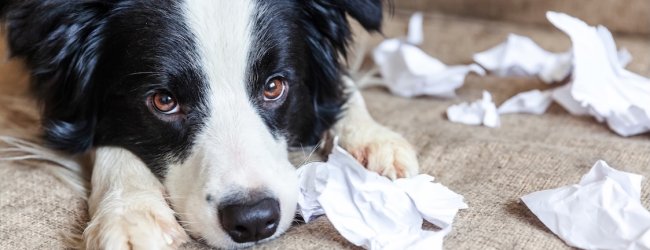Resource Guarding in Dogs: When Yours Is Extra Protective
Does your buddy tend to growl or snap when you take away their toys or clear away their food bowl? Sounds like a classic case of resource guarding in dogs. But why do they behave this way - and how do you manage it?
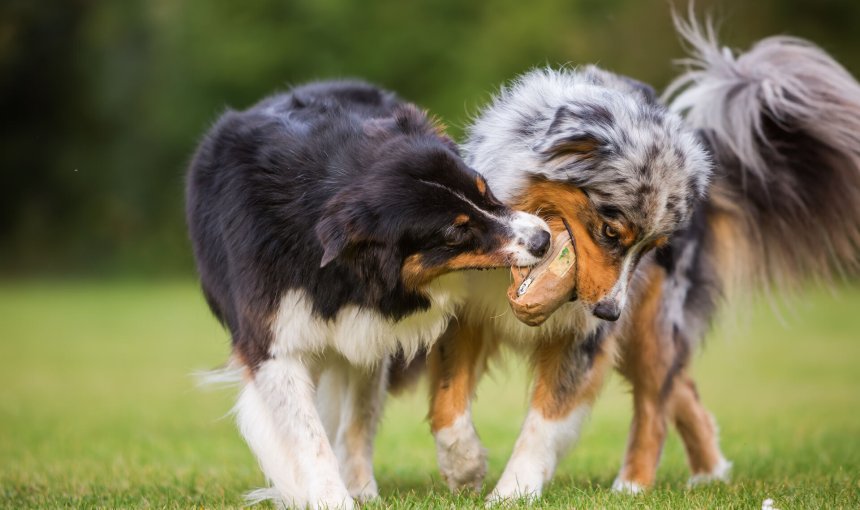
They might be the sweetest, good-est boy or girl ever – but if your buddy’s ever growled at you when you tried to clear away their toys or snapped at you when you approached their food bowl…it could be a sign of resource guarding in dogs.
Now this behavior might seem bizarre, but it does have its reasons. And these can range from mild and quirky (and even cute!) to a bit more concerning. Especially if your buddy’s gone as far as sneaking off to hide their prized possessions in some…strange places. (Like outside in the backyard or even under your bed!)
So in the post, we’re going to dive into what resource guarding really is, why your dog might be doing it, and when it’s worth paying a bit more attention to their behavior. (Especially if they’re getting in the habit of hiding their “treasures” in odd places!) Let’s get started.

Find out how your dog spends their time.
Read moreWhat exactly is resource guarding in dogs?
Resource guarding is actually pretty common in most dogs. (But it can be bothersome if it applies to just about everything.) This means that your dog feels the need to protect something they see as valuable.
Which could include:
- Their toys
- Their food – especially if you’ve got multiple dogs or pets at home
- Their bed or sleeping area
- A favorite sitting area, like that one sofa or couch
- Favorite items, like socks and slippers
- And even “their” people – including you! (Or whoever their primary caregiver is, who we’re going to assume is…well, you.)
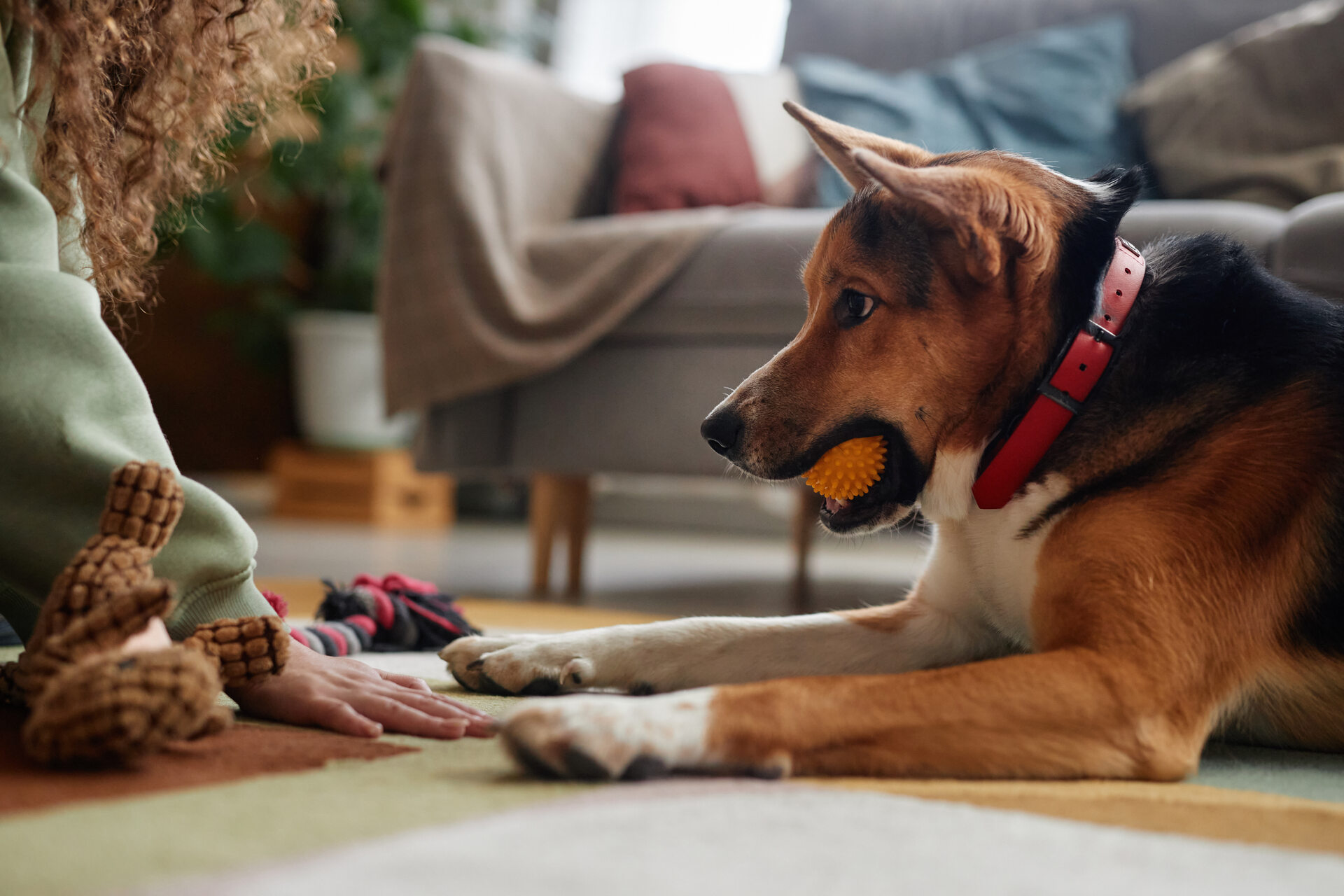
Is resource guarding always a cause for concern?
Now it’s understandable if you’re alarmed by your dog’s behavior when they’re on “guard” mode. Especially if they’re growling, barking, snapping – and maybe even biting!
But first, it helps to keep in mind that dogs are naturally pre-programmed to “protect” these resources. (Especially food.)
Second, your dog might’ve dropped some hints they’re getting protective much before they start growling or hiding. Like, for example:
- Staring at you pointedly
- Covering their toys or food bowl with their paws
- Trying to eat faster
- And in some cases, even hiding their treasures somewhere safe. (Like your backyard, under a bush, or even in some risky hiding spots indoors and outdoors.)
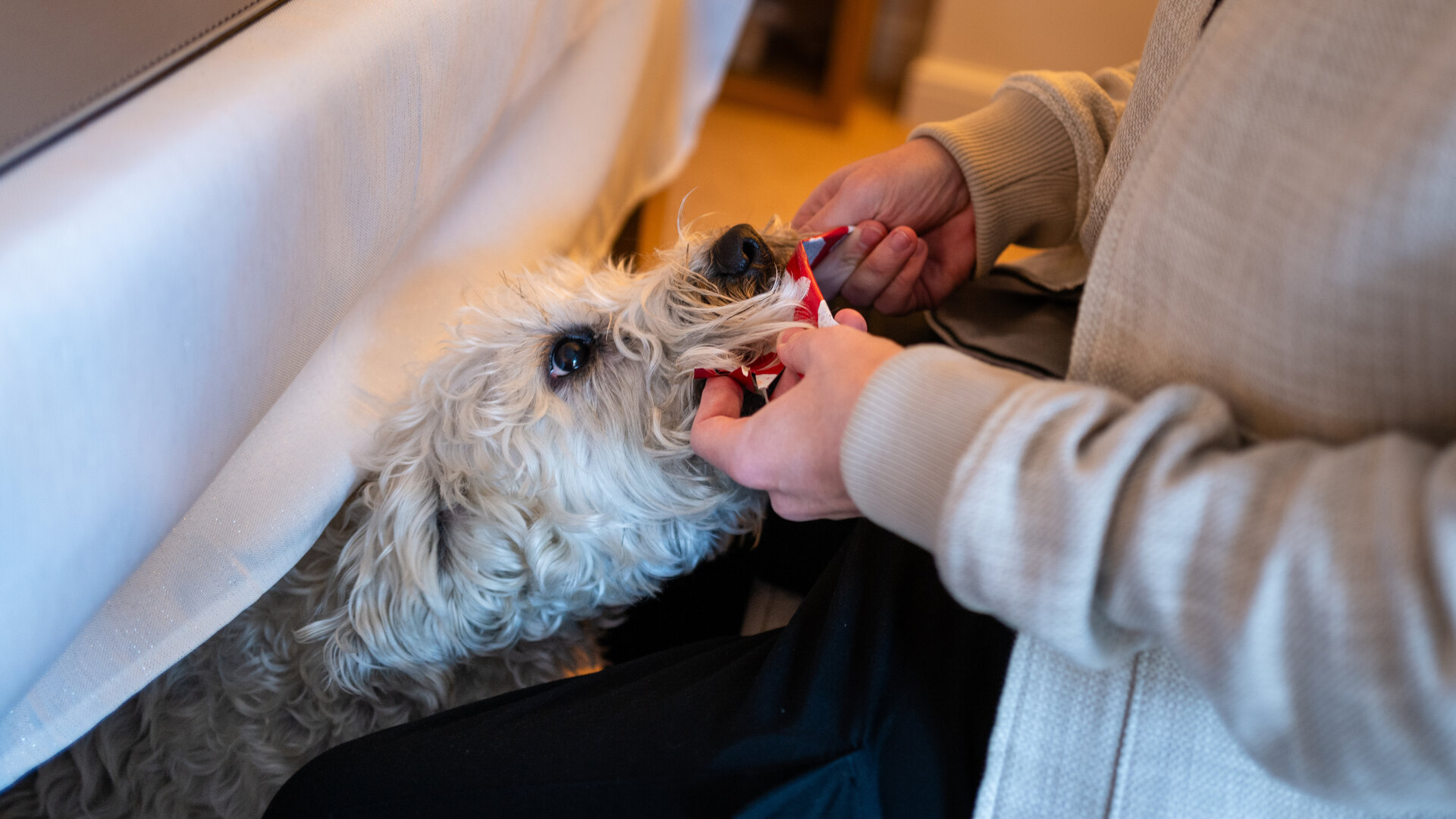
🍻 For example, if you’re out drinking with some friends, you might “hint” to the server that you aren’t done with your glass yet by quickly taking a sip or just holding on to it. It’s a polite, non-intrusive way of signaling that you don’t want them taking it away from you, right?1
To your dog, guarding what’s “theirs” isn’t a “bad” or “wrong” behavior. Though it can be a cause for concern if it’s:
- Persistent over time
- Escalating to biting or other aggressive behavior against you – or your other dogs or family members
- Increasing your dog’s risk of running into dangerous situations. Especially if they’re in the habit of hiding their toys, treats, and favorite things, both indoors and outdoors.
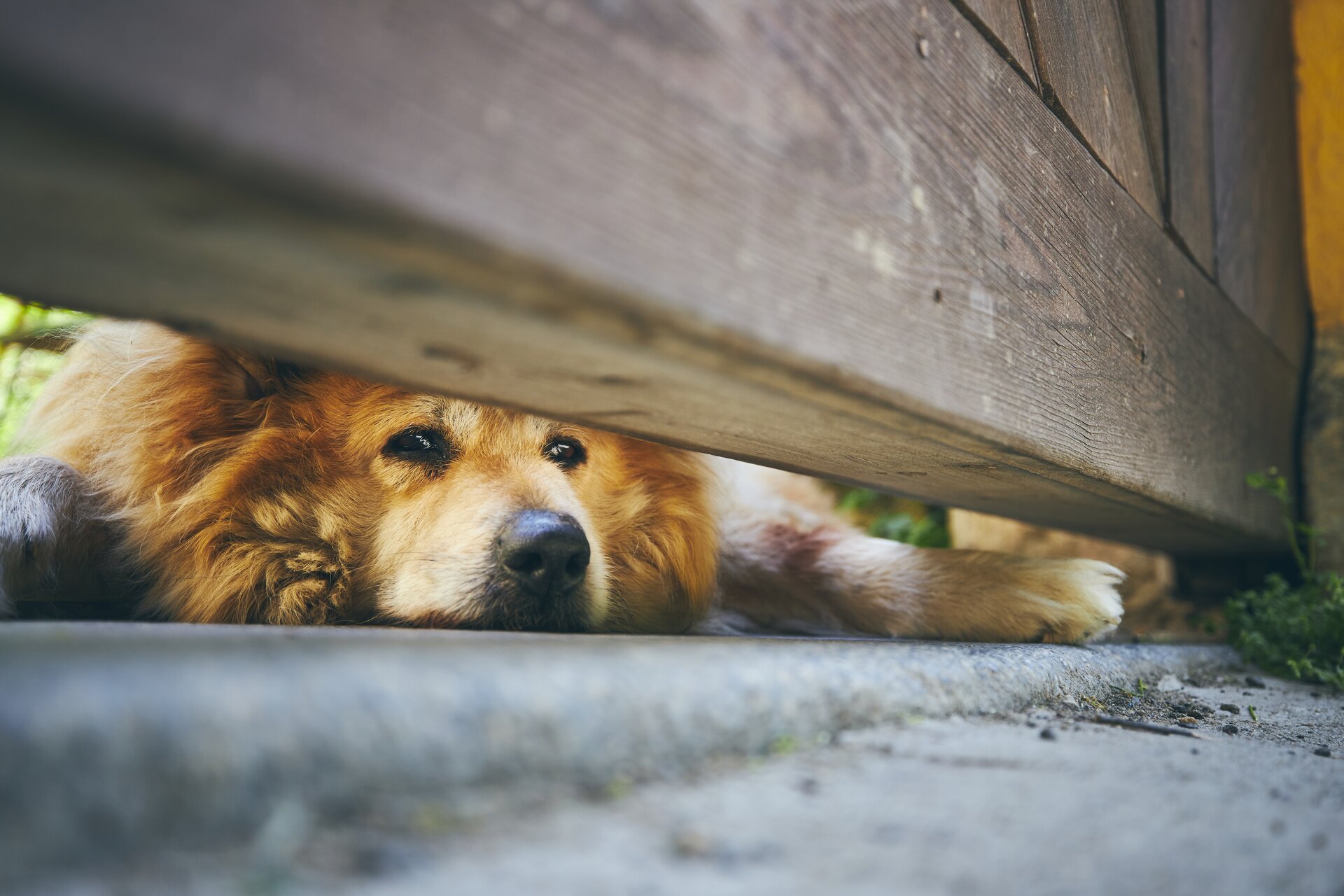
Why “hiding” their favorite things can be dangerous for your dog
Dogs hide for all sorts of reasons. But it can be a cause for concern if they’re hoarding on top of hiding.
In fact, it’s these hiding and hoarding behaviors that we’d recommend you keep an eye out for. Especially since it can open up the risk your dog ends up in some dangerous situations.
Like for example:
- Your puppy hides their toys and ends up getting stuck in some hard-to-escape-from spot indoors. (Like the space between your fridge and the wall – or even under your car in the dark, cozy garage!)
- Your adult dog buries food in the backyard – but also your neighbors’ – and further down the block, a bit too far for comfort. (And makes a nuisance of themselves in the neighborhood!)
- Your senior dog ventures outdoors to look for the perfect “hoarding” spot – and isn’t able to find their way back home. (Because they’re confused or disoriented.)
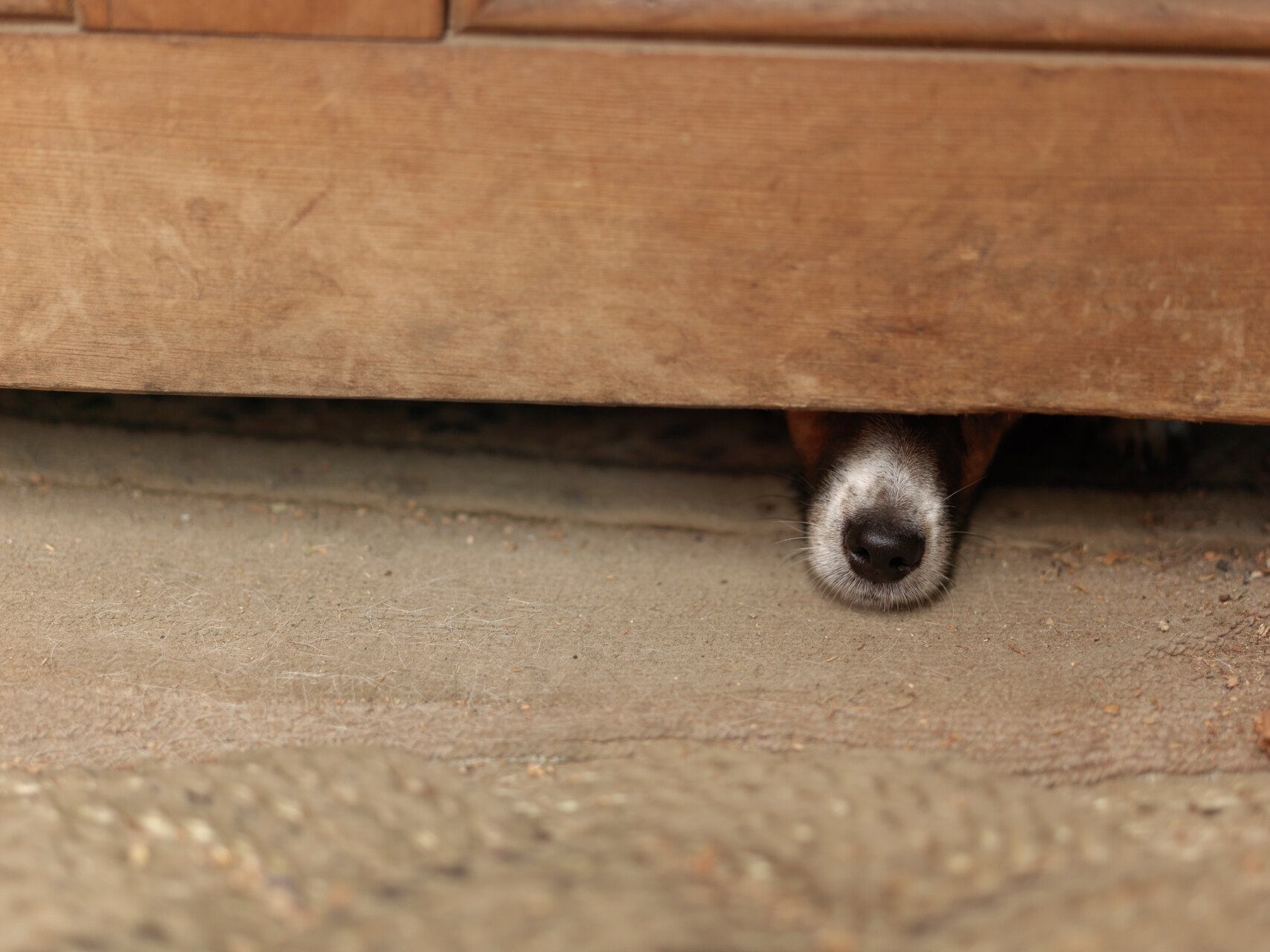
Which is why, besides regular training – and some tips we cover a bit further below – we’d always recommend keeping tabs on where your dog’s off wandering. Especially if they’re in the habit of hiding their toys or have a secret snack stash somewhere indoors or outdoors.
Which you could do by hovering over them 24/7…
💡…or joining a growing family of loving, responsible dog parents around the world – just like you – who are using dog GPS trackers as a safety measure.
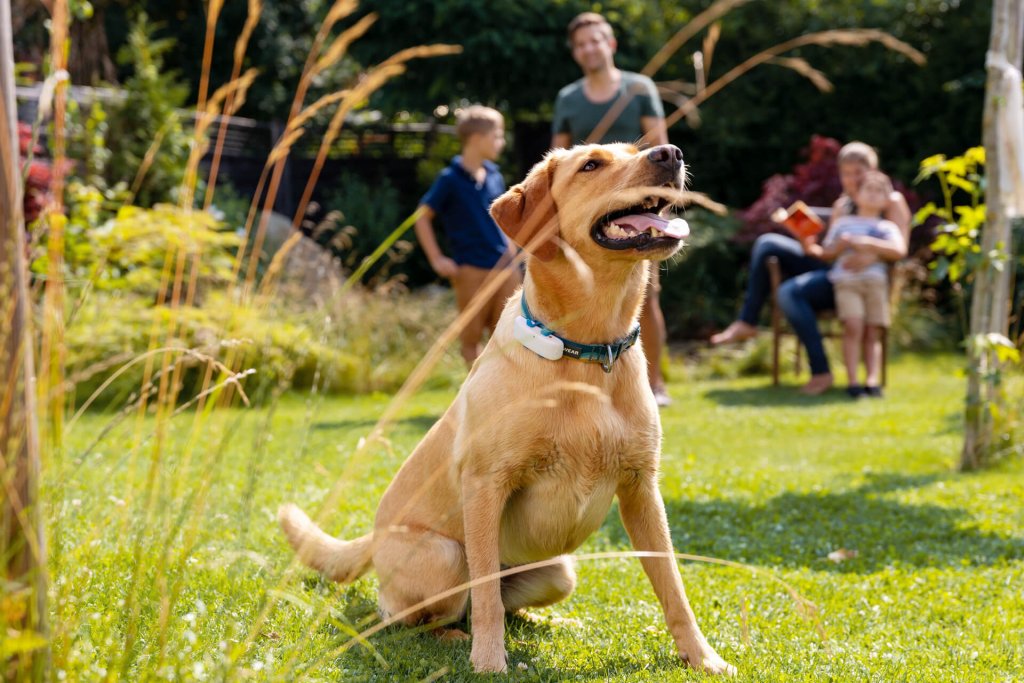
🐶 Because with your trusty Tractive GPS set up, you can now track your dog:
- In real-time,
- Over an unlimited range,
- While on vacation – or 175 countries on a Premium subscription
- Over a 24-hour Heat Map and Location History of their favorite spots around town (including any “itch”-prone zones)
All this – with just a glance at your phone.
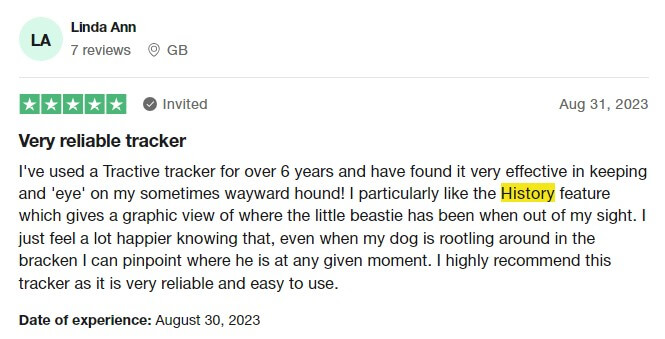
Why do dogs “guard” their resources?
For the most part, some amount of resource guarding is 100% normal. In fact, most dogs display some of this behavior at some point in their lives. Meaning, you might find them doing it as a result of:
Their natural instincts
Wild dogs and wolves need to protect their food and territory to survive. It’s a matter of life and death for them.
And in many ways, your furry buddy isn’t that different from their wild ancestors. (Yes, even your pampered fuzzball sleeping next to you.) So they still feel driven to do the same, even though you might be spoiling them rotten otherwise.
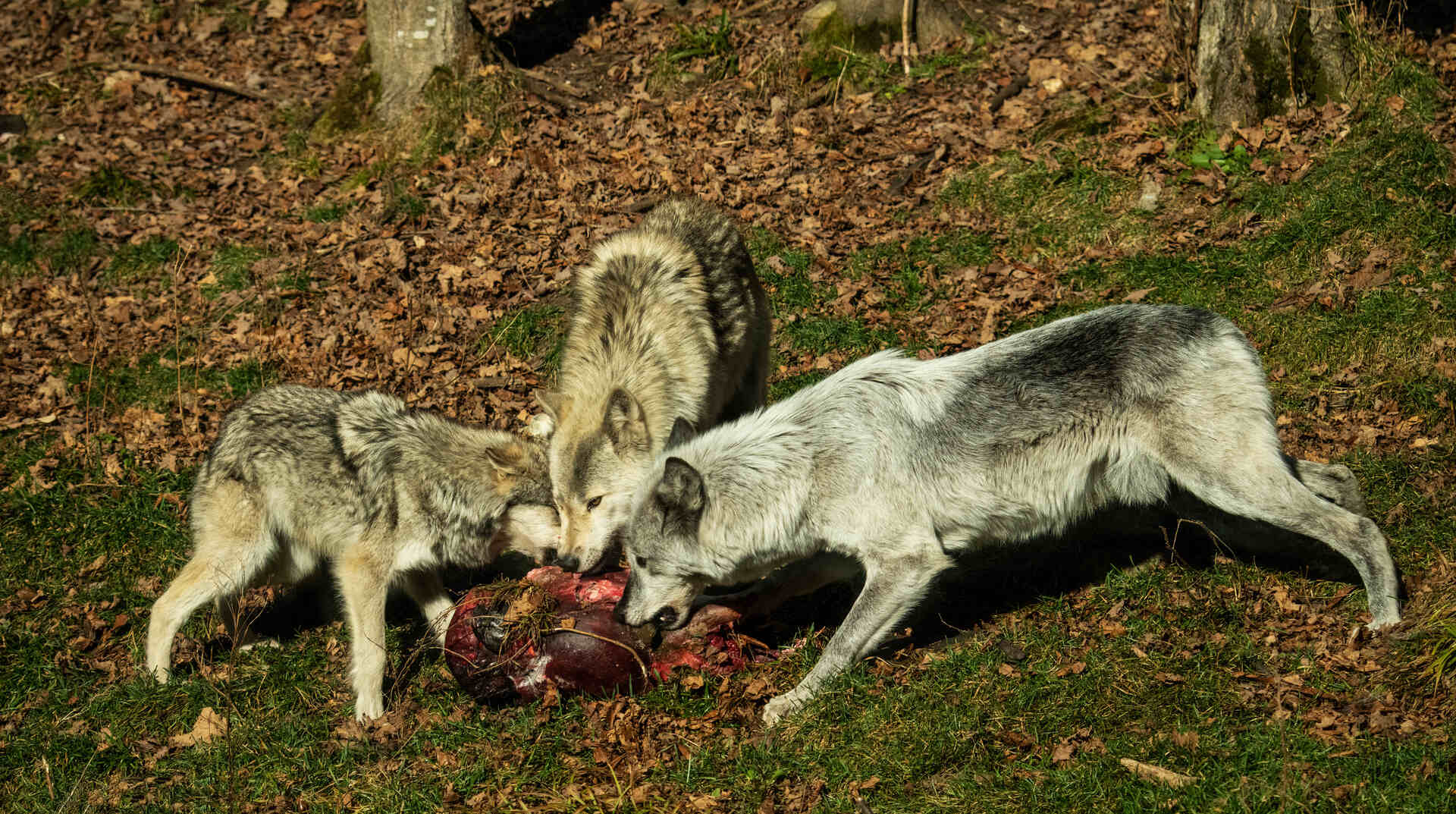
Your dog’s breeding history
Some dog breeds that have been historically bred as guard dogs might be a bit more protective than others. (Especially if they were trained to look after people.) Like, for example, the Shepherd family, Dobermans, Ridgebacks, and Schnauzers.
Likewise, herding dog breeds, like Collies, Bernese Mountain dogs, and Great Pyrenees, might even “herd” or boss you around. (Or your kids and even other pets.) It’s just what they’re used to doing, since they no longer have livestock to take care of!
Finally, “gun” dogs – like the Retriever family – were bred to carry things around in their mouths. (Including prey animals, like wild birds.) It’s one reason they might always like having something in their mouth, like socks or toys!
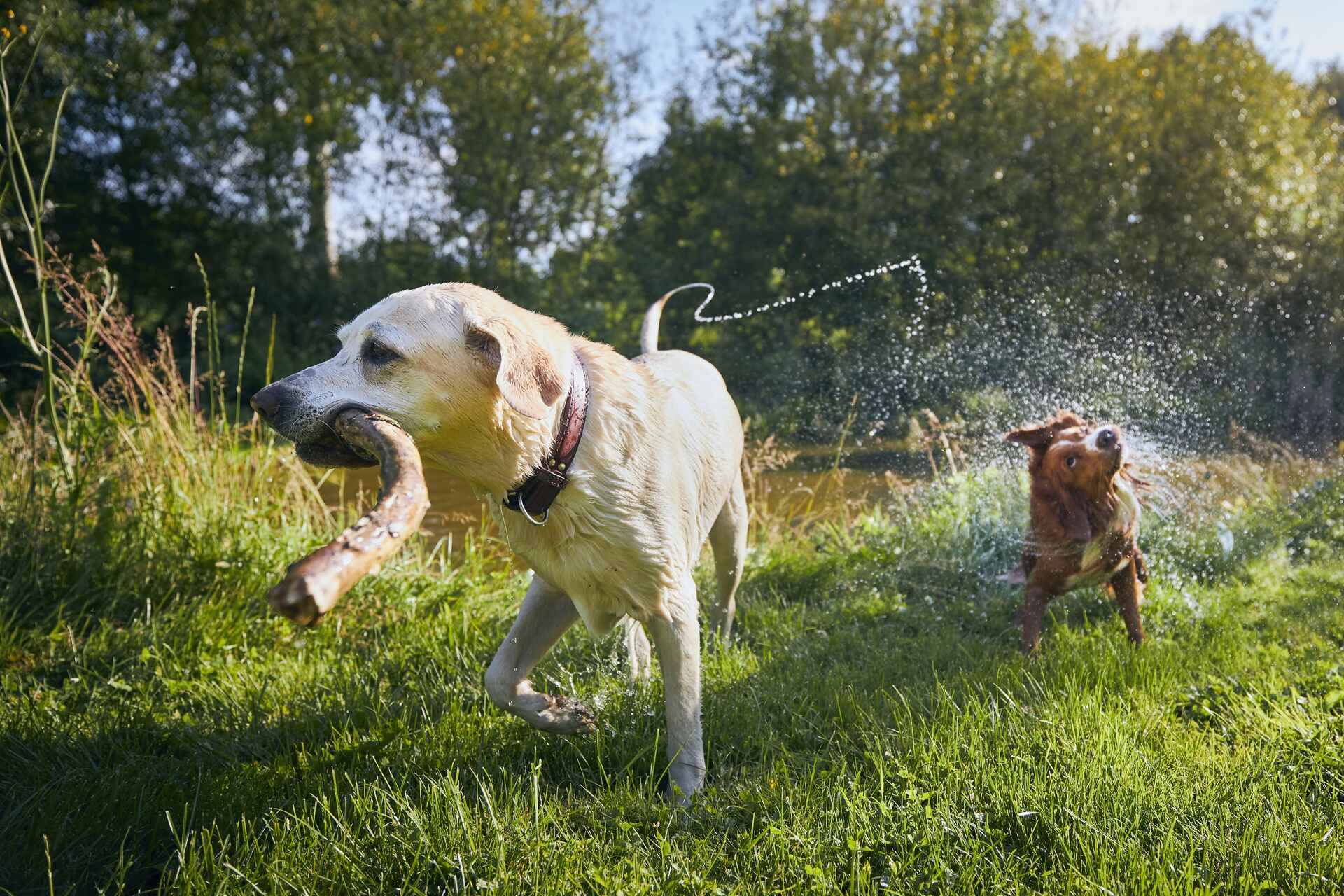
A change in their routine or environment
Even a “positive” change – like moving houses or bringing home a new pet or baby – can be stressful. (Not just for us humans but also for dogs!) When your buddy’s regular feeding, playtime, and sleep routine gets shaken up, it can trigger some weird stress-related behaviors as a result.
So, for example, if you’ve brought home a new pet, your dog might feel like their reign of being the baby of the house has just been destroyed.
- With things “out of control” as this new usurper arrives at home – taking away your attention – they might guard what’s “theirs” a bit more intensely.
- For example, they might suddenly stash their favorite toys under your bed or bury food in the backyard as a way of dealing with stress.
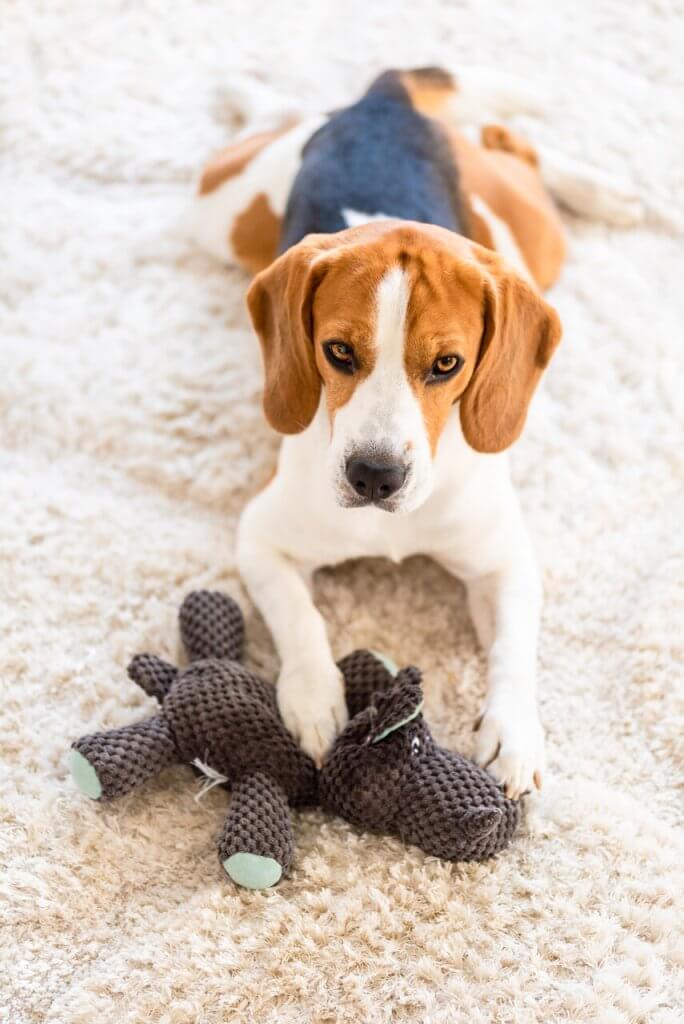
Be patient with your buddy around this time and do your best to ensure some quality time with them.
Once some time as passed, you might see them growing less protective as they settle into a new routine.
👩⚕️However, don’t hesitate to bring up your concerns with your vet if it persists. They can connect you to a professional dog behavior specialist to get to the bottom of things.
Fear & anxiety
This is where things can get a little trickier. Some dogs end up getting extra protective around what’s “theirs” as a result of fear or anxiety.
- Dogs that are prone to anxiety might guard their toys, for example, since it gives them a sense of control.
- Hiding can be a sign your dog is spooked by something in their environment. So they might grab along a toy or blanket for “safety.” (And end up hoarding all of them in one spot if it keeps happening!)
- You might observe this happening more so when you’re not at home. Which your dog might not be the biggest fan of – especially if they already have separation anxiety.
- Hiding behaviors are also a sign of anxiety – especially if your dog starts hoarding their items in unusual spots as a way to cope. Including food, toys, and even items with your scent, like your shoes.
Read more: Why Is My Dog Scared Of Everything? Our Expert’s Take
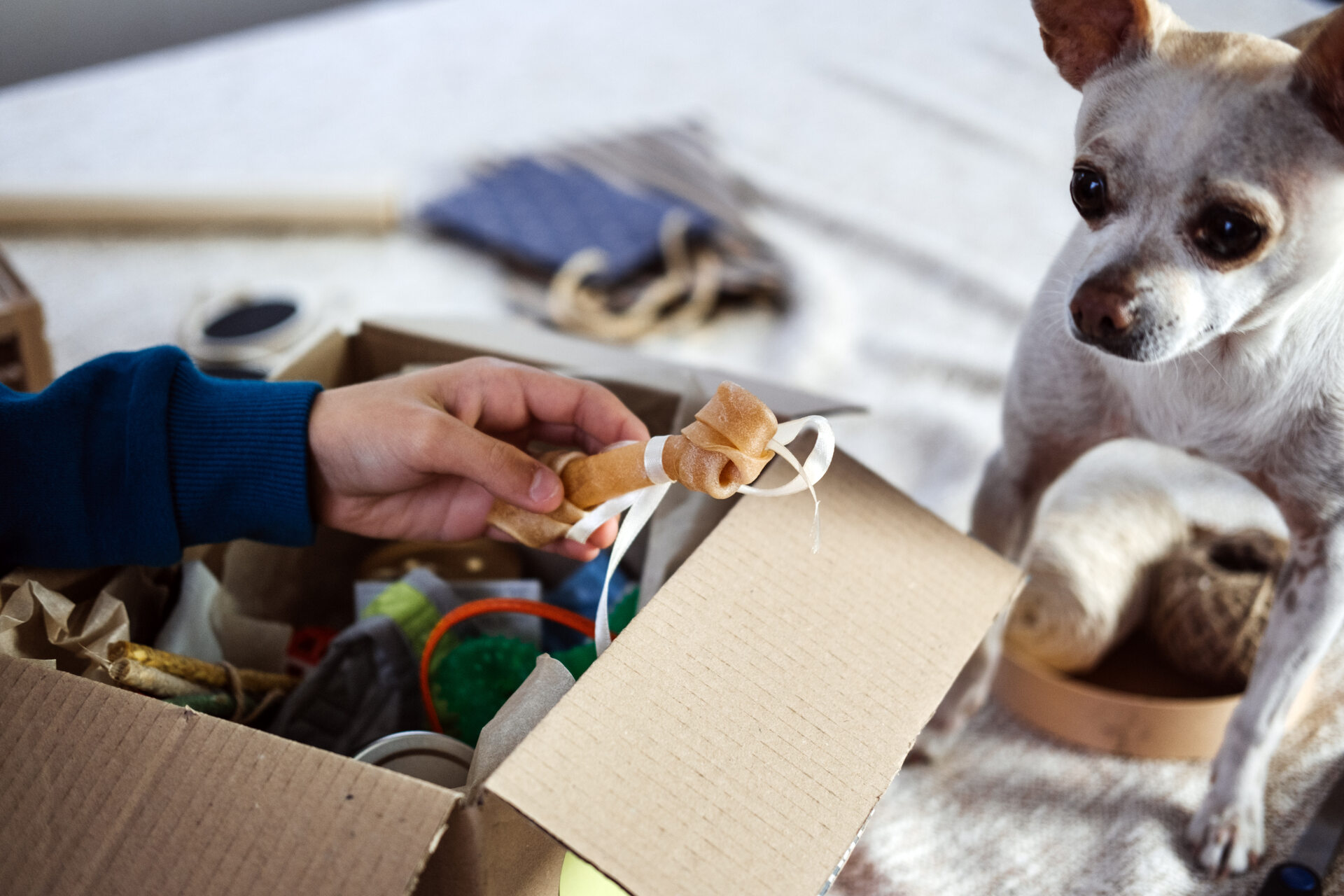
⚠️ A scared, anxious dog is also one that’s more likely to run away from home.
Especially if they feel threatened by, say, a new, more dominant pet that’s hogging their food, toys, or treats – or some other “scary” change in their environment. (Like you switching to a night shift and not being around as often.)
So if you’re suspecting their anxiety might have a deeper cause, drop by your vet for a full checkup. They can best advise you whether your dog might benefit from anti-anxiety medication or other professional help.
💡And, of course, in the worst case scenario – like if you come home to find them missing – just hit “LIVE” on your Tractive device:
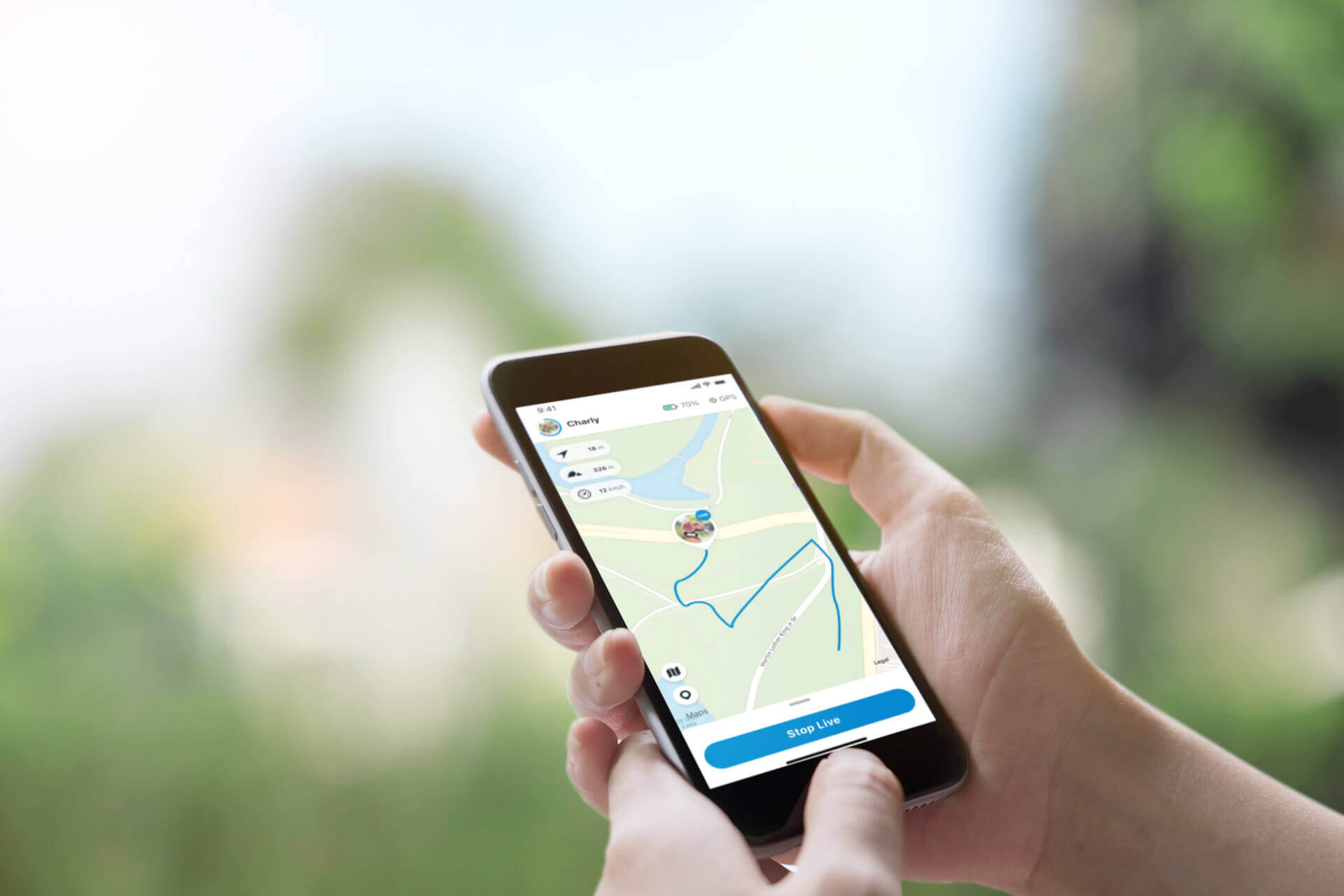
🐶 And follow your dog’s every step – as they make their every step.
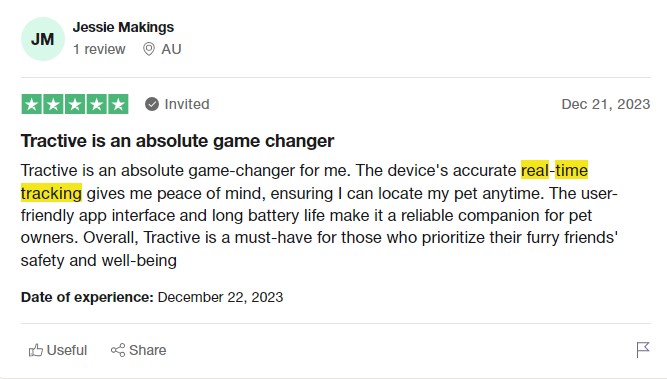
Negative past experiences
Much of the time, resource guarding in dogs can be a learned behavior they’ve picked up from past experiences. Like, for example:
- Having to compete with other dogs for food and space – especially if they were all feeding from the same bowls
- Feeling neglected or threatened around resources, like not having enough toys to play with or beds to sleep in and having to fight for space
- Not being socialized to share and get along as puppies (who tend to explore the worlds with their mouths anyway)
- And even traumatic experiences, like in the case of rescue dogs
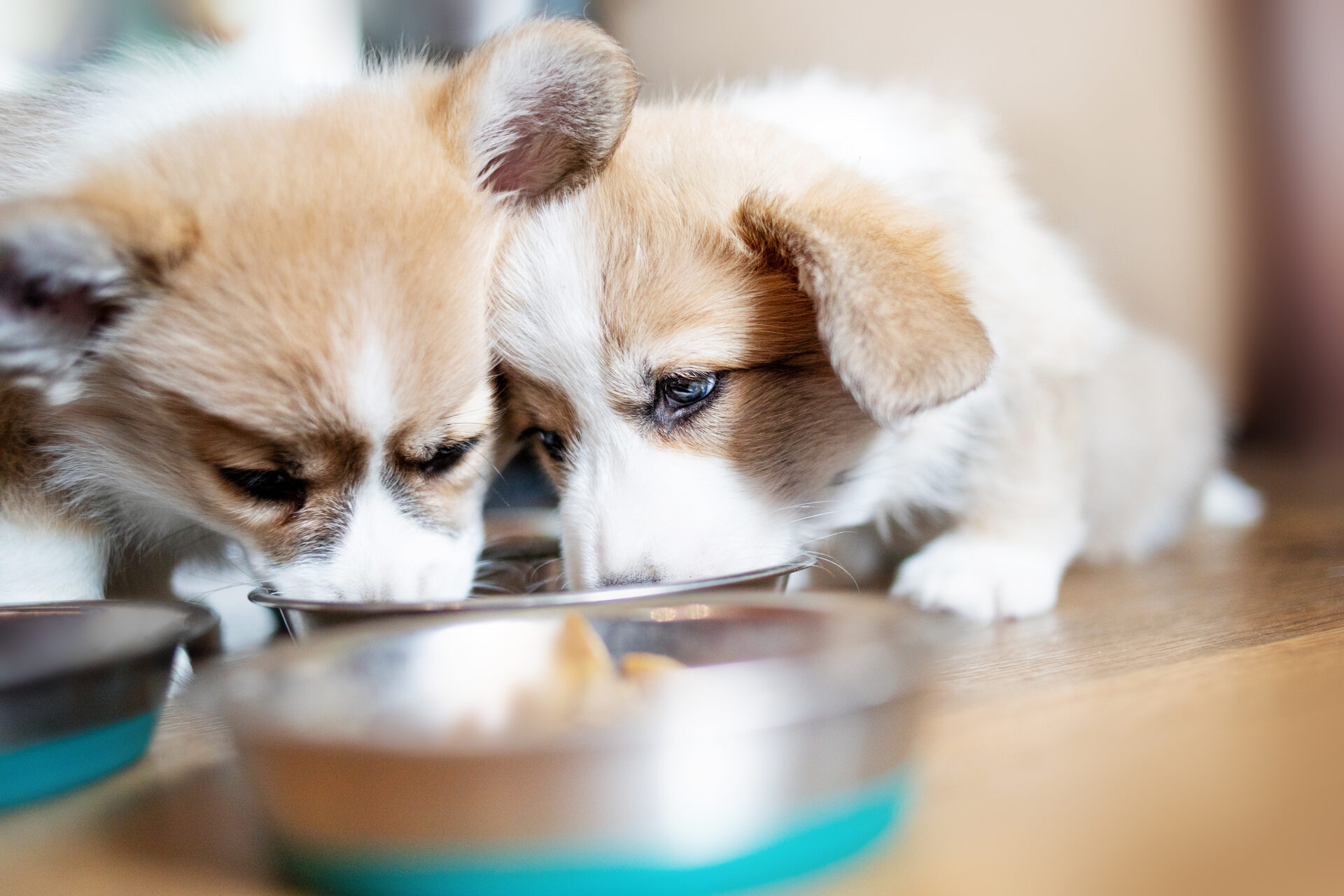
Even if your dog is in a safe, sane, predictable, pampered environment right now – old habits die hard. Helping them overcome these “survival” behaviors will take time and patience. (And separate feeding bowls and sleeping beds if you have multiple dogs!)
Else, it’s also a good idea to seek help from the shelter staff or rescue organization you adopted them from. Understanding your buddy’s history can help you figure out which situations they tend to get extra protective – and what steps you can take to wean them off this behavior.
When you give your dog the most attention
Another situation where your dog’s resource guarding might be a learned behavior is if you’ve inadvertently been giving them attention when they, say, chew on something or act protective in general. (Even an “Aww, isn’t that cute!” counts as “attention.”)
In fact, if you’ve ever wrestled something out of your puppy’s mouth to force them to drop it, it can actually make them want to guard it even more! (Yes, even if it’s food that’s off-limits for dogs or something dangerously toxic to them.)
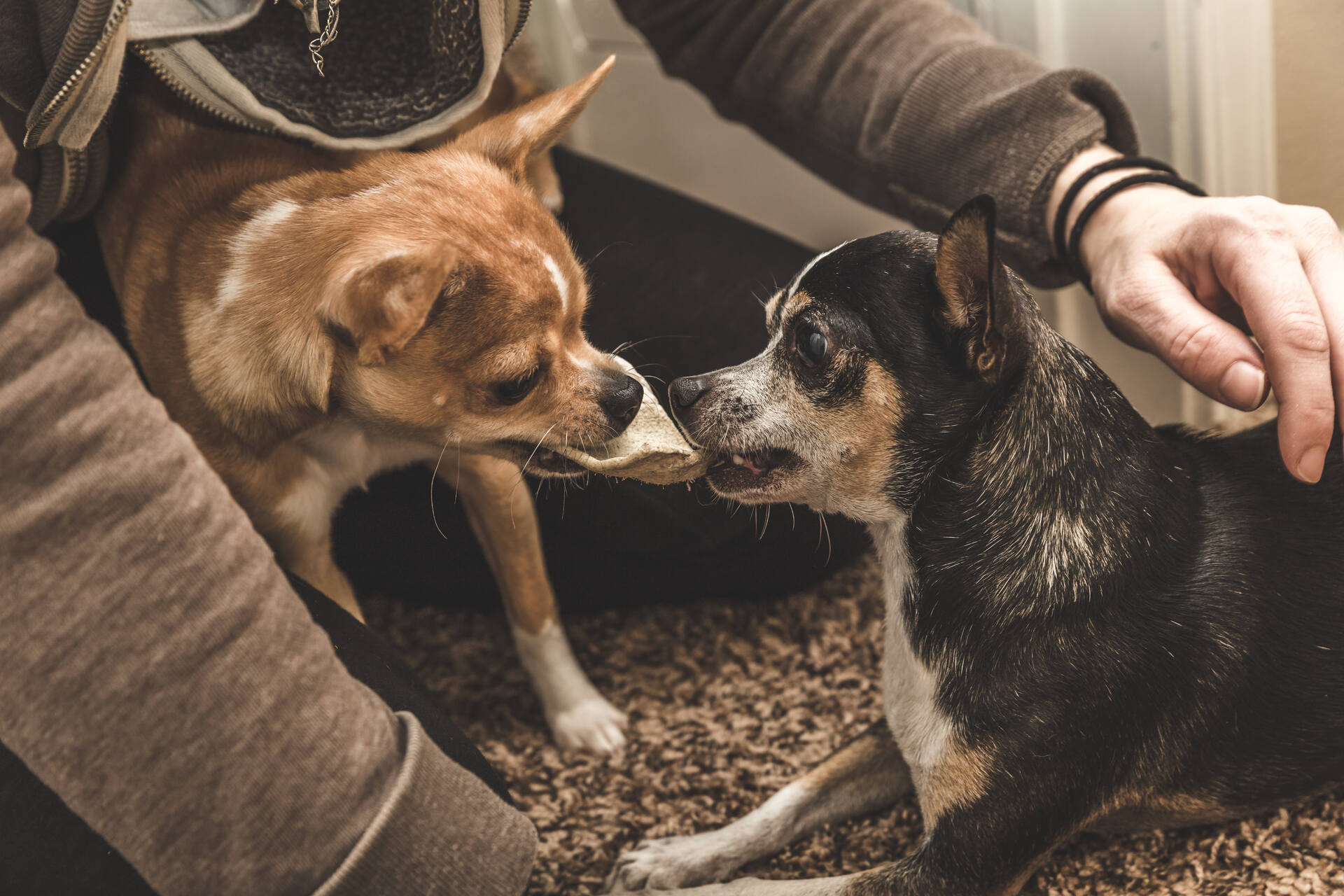
Likewise, if your dog is happiest when holding something in their mouth – and then you take it away from them…well, let’s just say even their patience has its limits.
So with all these reasons underlying resource guarding in dogs, here’s…
How to wean your dog off their extra-protectiveness
With regular training, time, and patience, you can help your dog relax and not get defensive right away around their favorite things. Here’s how to get started.
Help your dog understand you’re not a threat
You might find your dog growling or covering their food bowl or trying to hide their toys when you approach them. Which is where it makes sense to help them understand that someone approaching them is no big deal – they can relax and not worry you’ll take it away from them.
Here are a few training tips from the Battersea Dogs and Cats Home if your dog tends to growl when you approach them during mealtimes:
- As your dog nears the end of their meal, get close and drop some treats near their food bowl – and move away.
- Repeat the same steps a few times over the next couple of days.
- Gradually drop the treats closer to your dog’s food bowl.
- Don’t have treats at hand? You can also use some dry food kibble instead – placing small handfuls in your dog’s food bowl when they’ve finished eating.
- Once they’ve finished eating the kibble, approach and add another small amount to their bowl.
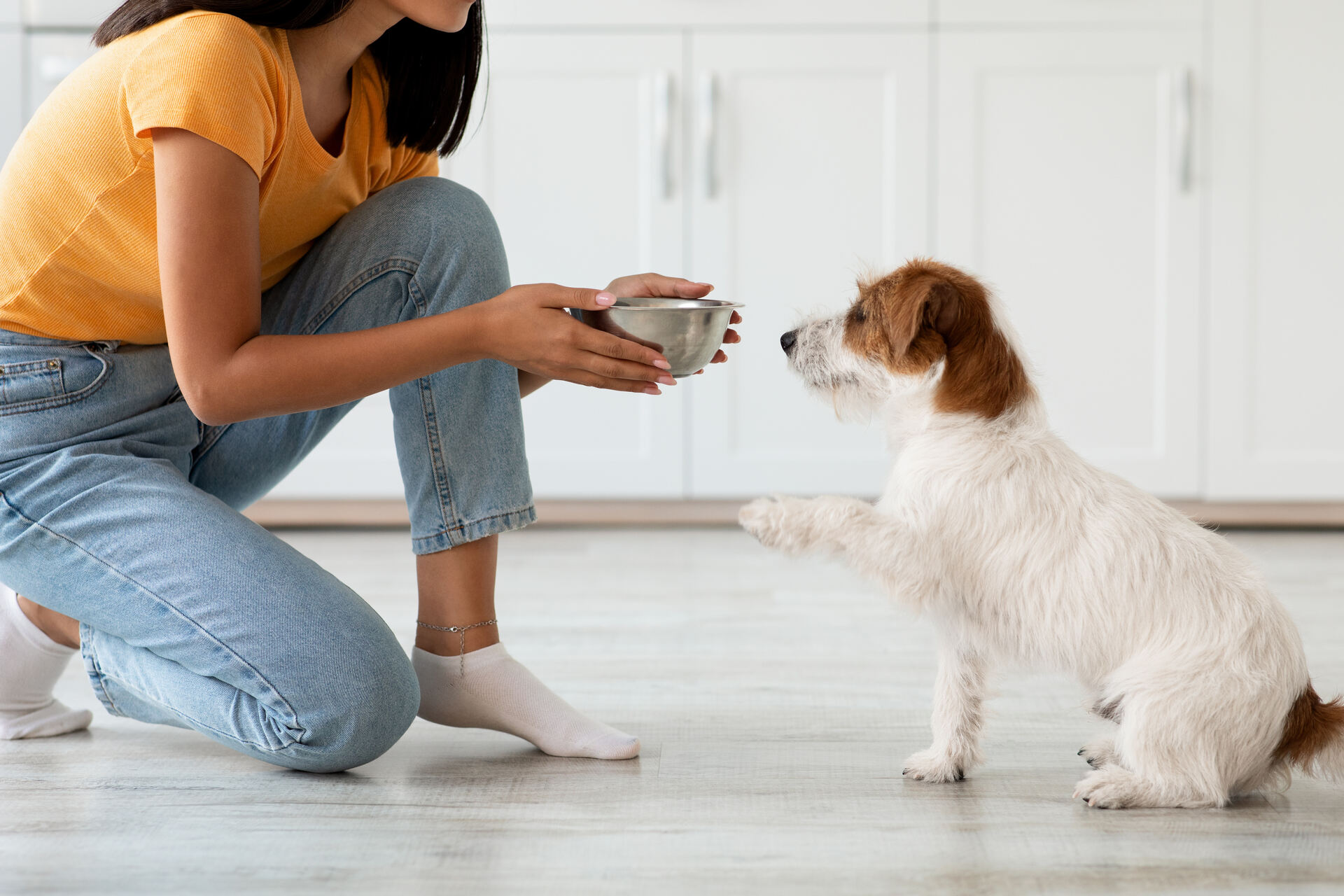
With time, this will help your dog anticipate your presence as “treats incoming!” Meaning, they’ll learn that you approaching them is a positive sign – and that they don’t need to guard their food around you.
Follow the same steps – i.e. approaching and dropping treats – if you find your dog resource guarding the most around toys or other favorite items, like socks or slippers.
Set some firm boundaries with friends & family
Training your dog to overcome their resource guarding takes time, effort, and patience. Be prepared to invest at least a few weeks and months in the process – and make sure everyone interacting with your dog knows and understands your dog’s needs.
This means setting some clear rules around, for example, mealtimes. Let your friends and family members know it’s best not to approach your dog when they’re eating or chewing something. (Or it might just stress your dog out!)
Likewise, it’s best not to withhold any toys (even playfully) from your dog, especially if these are items they feel extra protective around. You want to avoid any growling, barking, hiding, or aggressive behavior as a result of your buddy getting frustrated or annoyed.
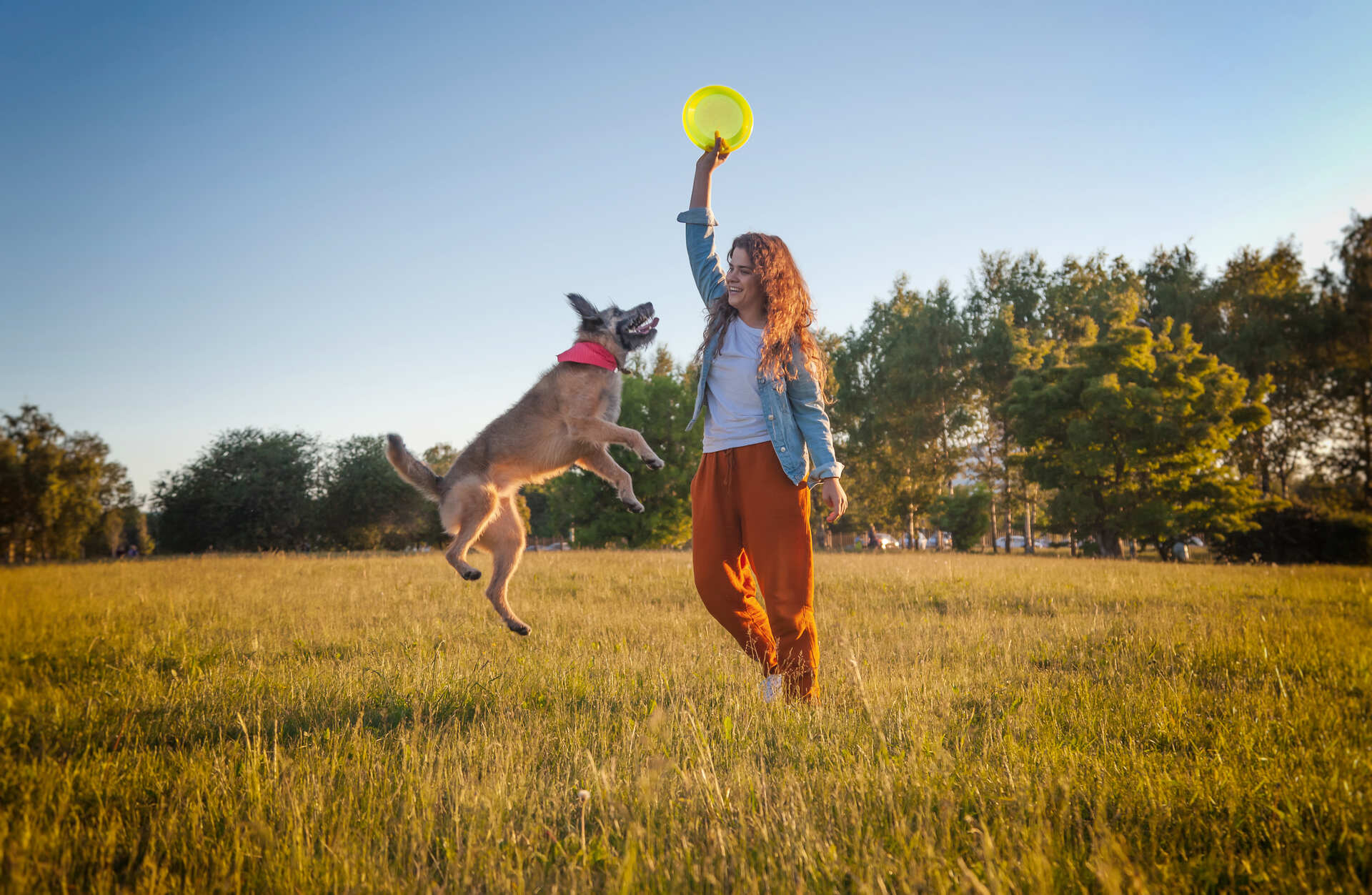
Double down on your dog’s obedience training
One of the basic dog commands is “Drop it” or “Leave it,” – which you’ll find helpful getting started with as soon as you can begin training them. This can help prevent your puppy from chewing on something dangerous (like an exposed wire) or your adult dog from snarfing up some leftovers from the sidewalk.
A command like “Drop it” is way more effective than trying to wrestle something out of your dog’s mouth. (Which can only worsen their resource guarding – or make them think it’s a fun game of chase instead!)
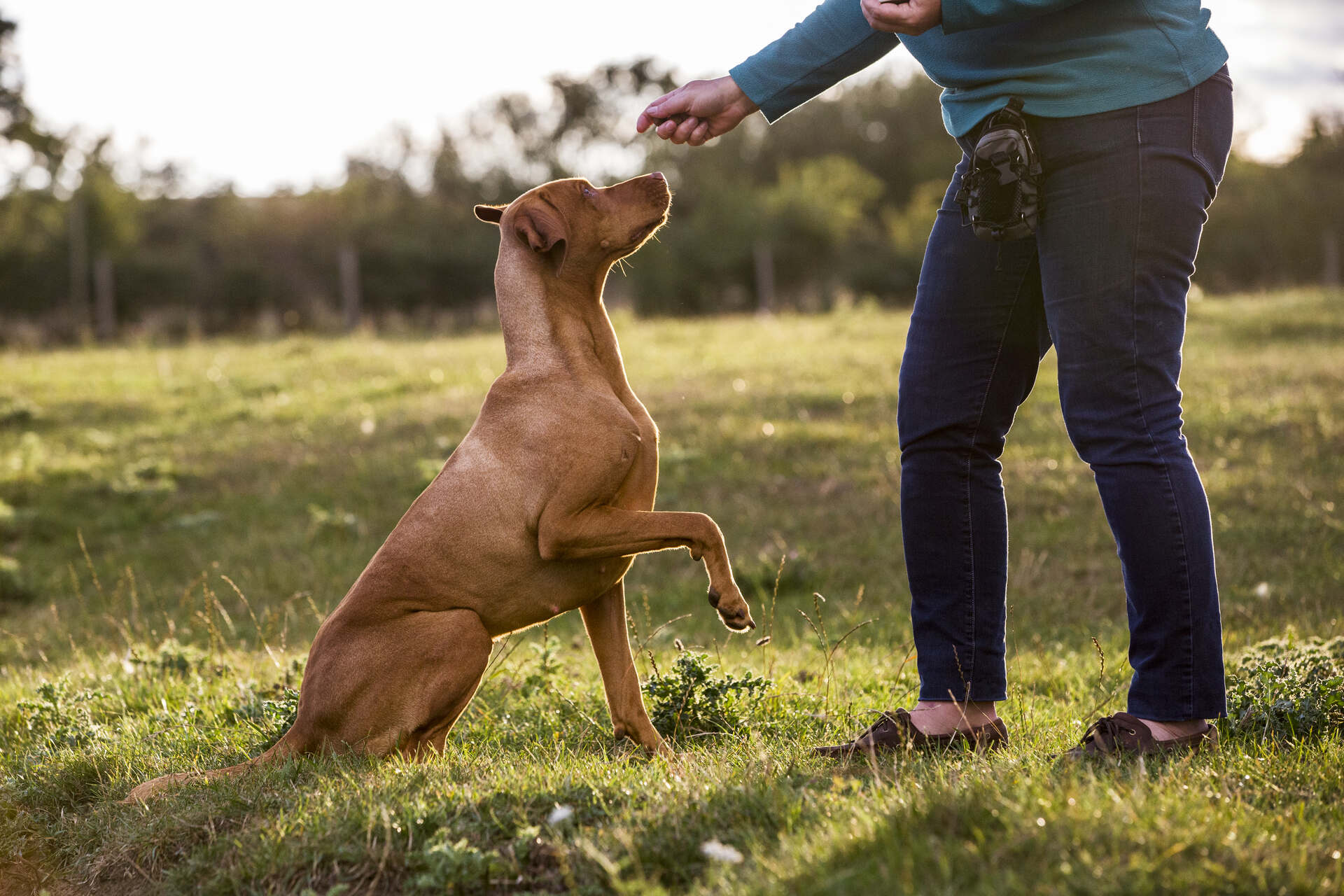
So here are some simple tips to get started.
Wait for your dog to be unoccupied and in a quiet, familiar environment, teach them that “Drop it,” means a treat:2
- Say “Drop it,” and put a treat on the floor for your dog to eat. Repeat this process multiple times over a couple of days until your buddy gets used to it. (Yes, your dog can understand different words from their sounds and the action connected to them.)
- Gradually, give your dog one of their (less favorite) toys and tell them “Drop it,” followed by a treat on the floor. Don’t take the toy away yourself but let your dog approach the treat once they get bored of the toy. Repeat this process a couple of times over the next few days.
- Gradually, say “Drop it,” – wait for your dog to drop the toy – and only then place the treat on the floor.
- With time, you can move on to practicing with some of their more favorite toys. (Though be mindful not to pick those your dog gets extra protective around at first.)
- Never try to physically take the toy from your dog. (They’ll mistake it for a game of tug of war instead!) Rather, hold out the treat and try to distract them from the toy instead.
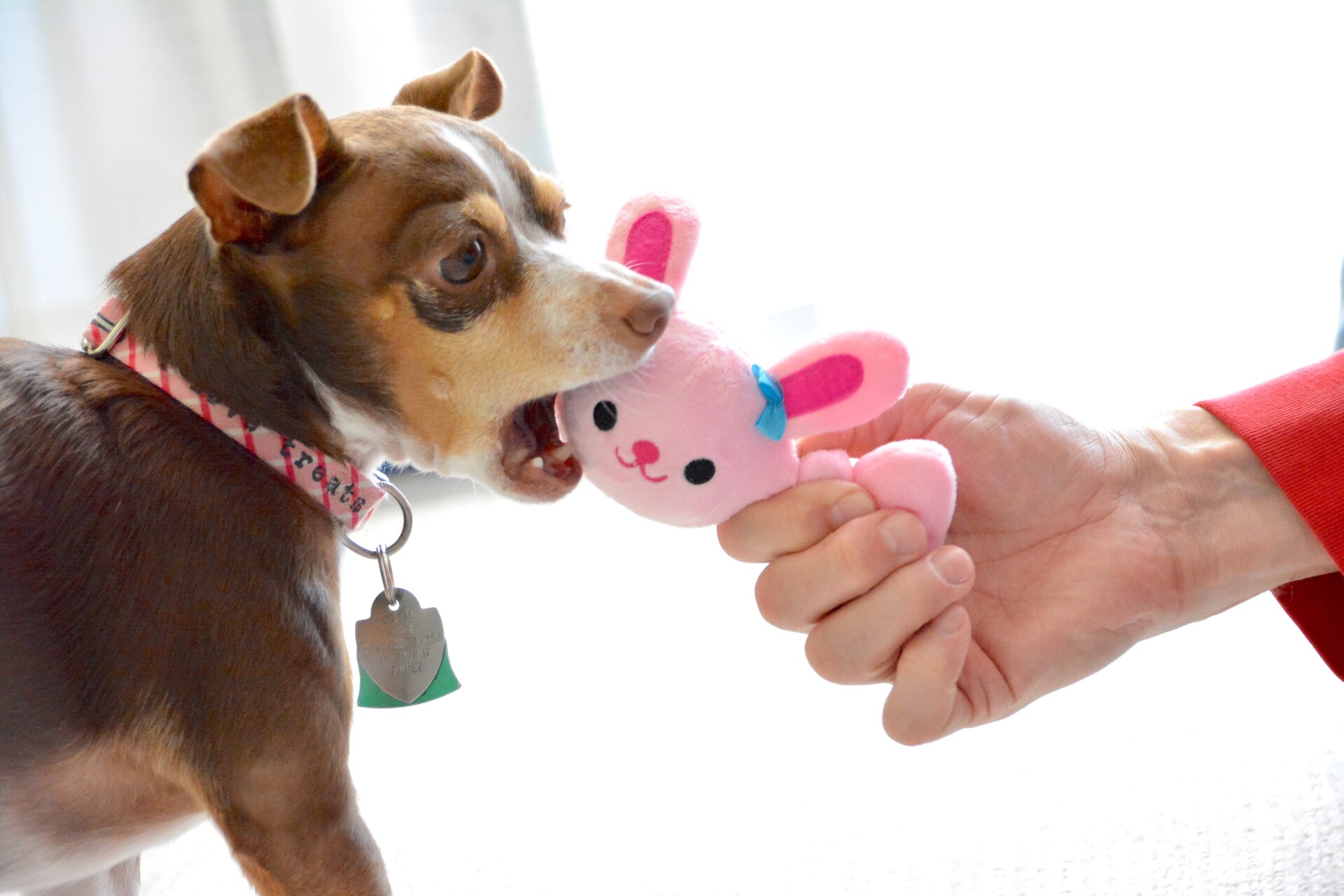
Redirect your dog’s attention elsewhere
Some dogs do best when you address their resource guarding with an “item swap” or exchange. This will come in handy when you need to clear away their (empty) food bowls or tidy up a room full of toys.
In this case, you essentially want to “distract” your dog from whatever they’re guarding. So you could:
- Drop some treats or a toy quite a bit of a distance away from where your dog’s sitting – but of course, within sight of them.
- This will make your dog move away from whatever they’re guarding, so you can safely clear it away.
- You could also get another family member or housemate to keep your dog busy in another room while you clear away their toys or other items.
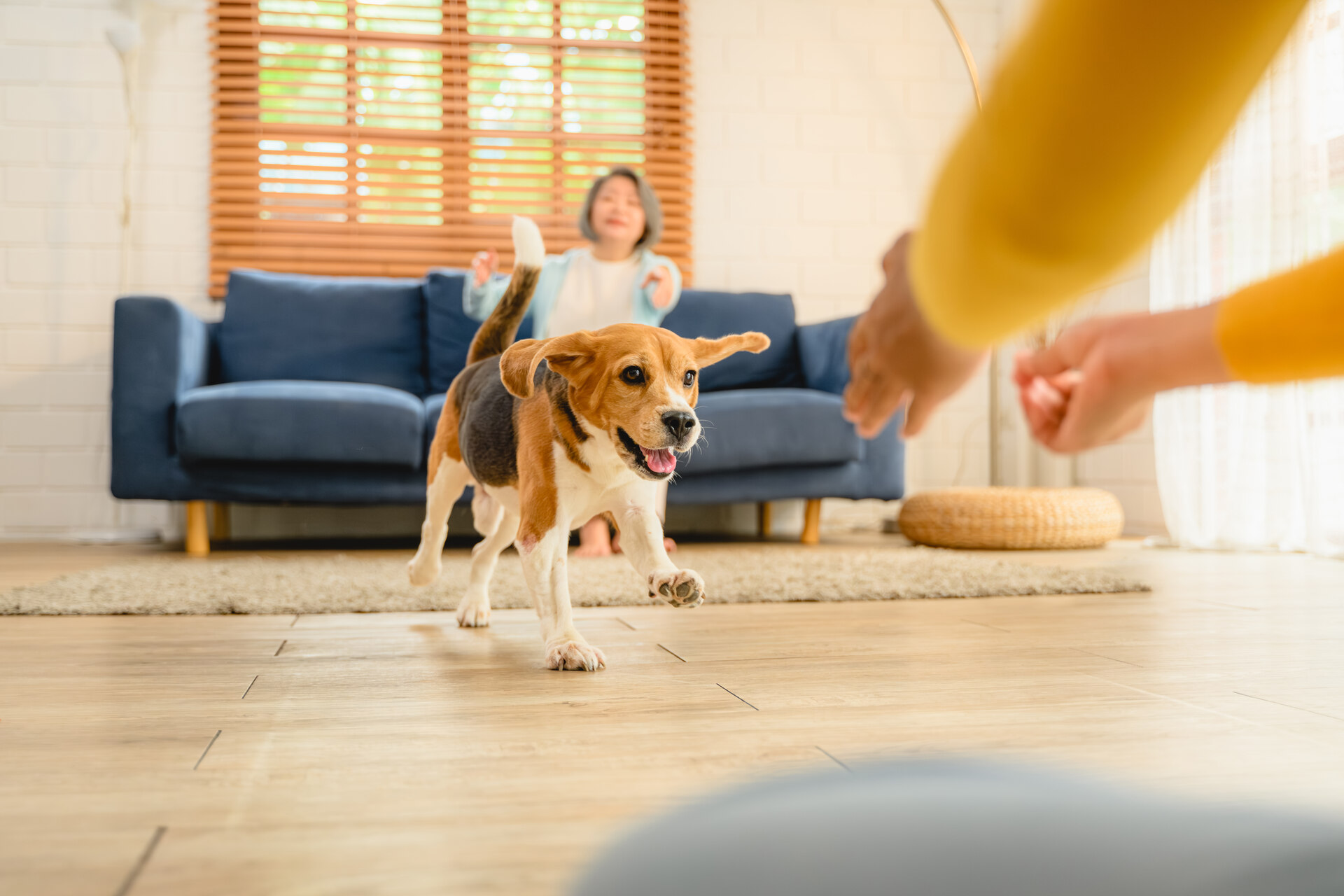
If all these training tips don’t help – or your dog is responding aggressively – there’s nothing wrong with leaving some jobs to the pros. Get in touch with a professional dog behavior specialist or a training school nearby that can help you figure out how to best adapt your dog’s needs.
Watch out for any odd hiding behaviors
Last, but not least – resource guarding in dogs can turn up in some weird behaviors which you’re best off keeping an eye out for. Specifically, running away to hide their items in some weird spots, both indoors and outdoors.
Which can be funny at first, but not as amusing if it ends up with a mess under your bed or elsewhere around the house – or even a backyard full of holes from your dog’s handiwork!
Even worse, your dog might end up in some risky indoor hiding spots – especially if they’re on the smaller and/or younger side. Including:
- Dark cozy spots, like basements, attics, and garages – maybe even under your car
- Washers and dryers (which they might leap into if you’ve tossed their toys inside!)
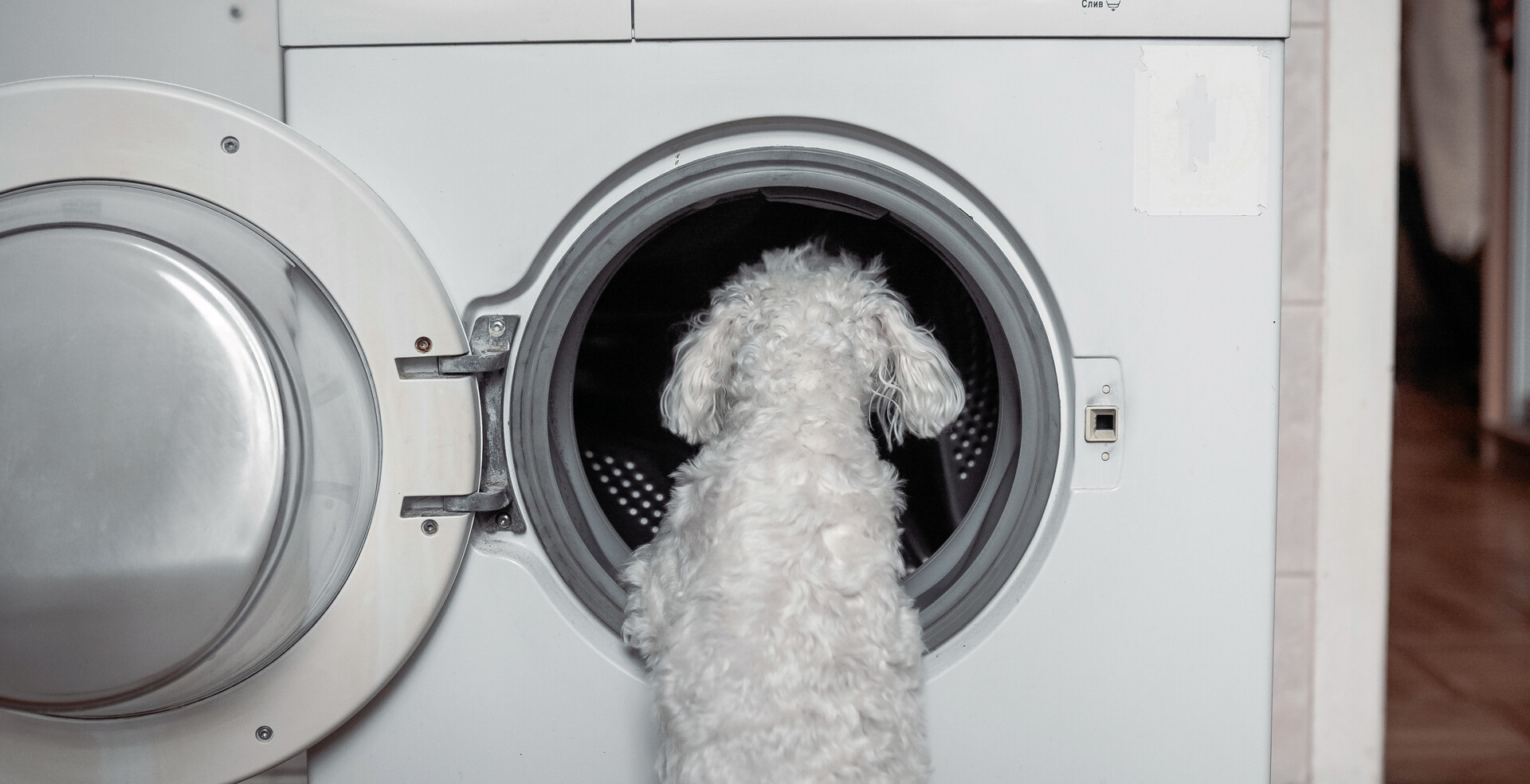
- A cabinet, cupboard, or even a drawer – where they might get stuck
- Narrow spaces, like between your bed or fridge and the wall
⚠️ Which doesn’t even cover the dangers your dog might run into outdoors – from passing cars and cycles, other animals, pet thieves, poison bait, animal traps…the list goes on.
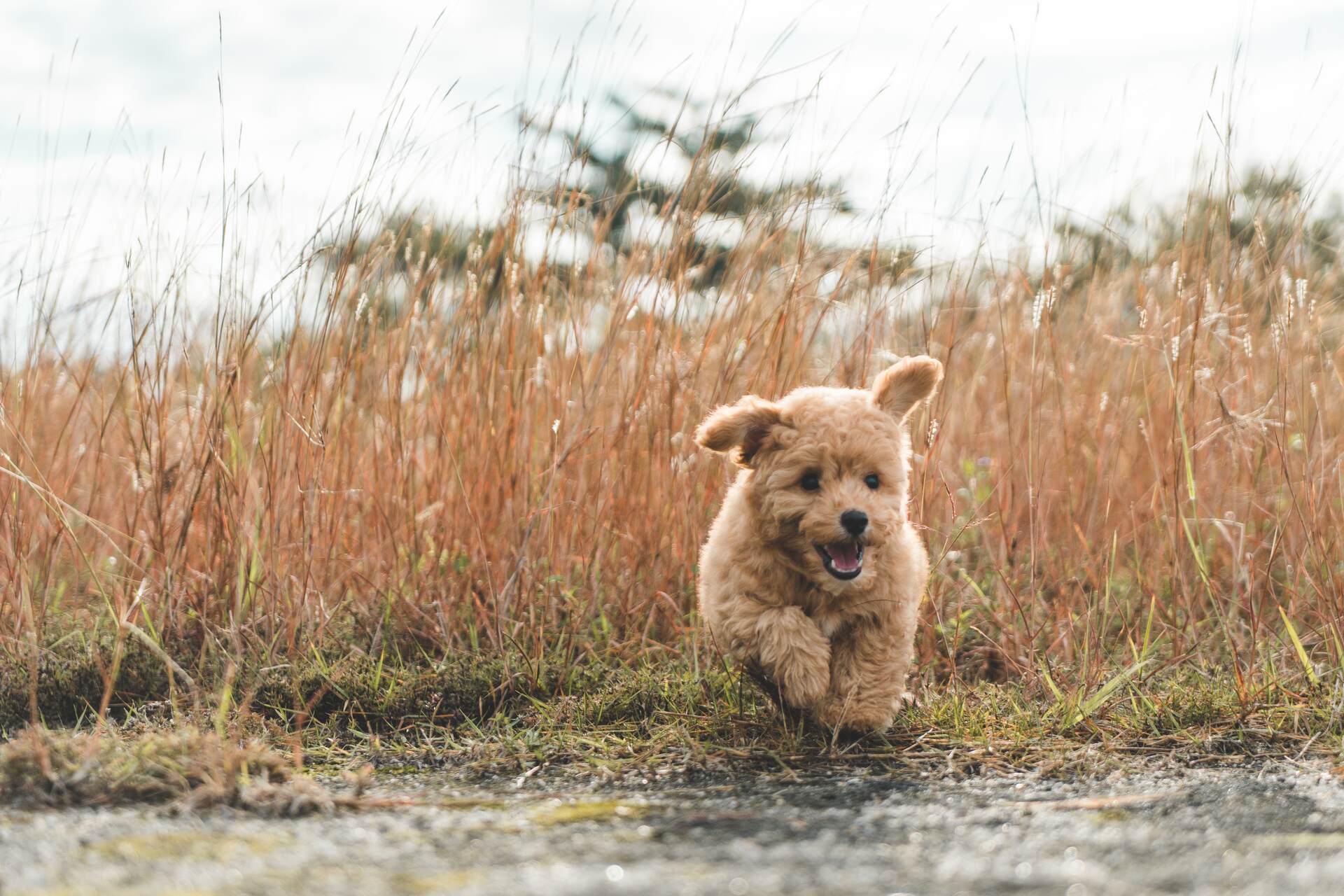
💡 But if you’ve got a Tractive device strapped to their collars, you’ve got your peace of mind at your fingertips – no matter if your dog hides indoors OR outdoors.
Besides GPS, your trusty Tractive device also includes close-range Bluetooth tracking – so you can quickly and easily find your hiding dog indoors. (Or in areas where GPS isn’t the most helpful.)
Or if your dog is in the habit of disappearing to hide their items outdoors, just check their Heat Map and Location History.

So you can figure out what spots around town your buddy likes to spend most of their time in – whether that’s for:
- Hoarding,
- Hiding,
- Hunting,
- or just hanging out
⚠️ Which, in an emergency – like if your dog’s gone missing – can actually help you figure out where to look first.
Plus, spot even quicker if your dog is venturing into any areas that might not be the safest for them or where they might be likely to get lost, injured, or in trouble.
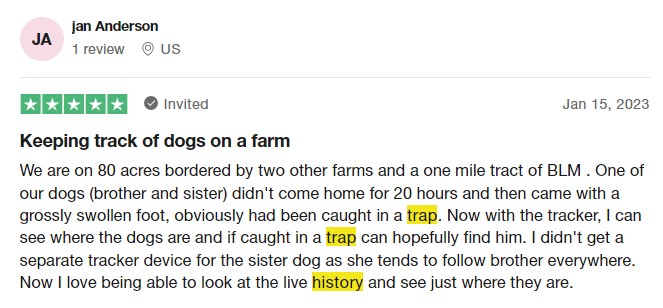
Ready to teach your dog that sharing is caring?
More often than not, resource guarding in dogs is 100% normal and not a cause for concern. It’s an instinctive behavior for them – even more so for certain dog breeds.
Though, it could also be a learned one from your dog’s past experiences. (Especially if they’ve had to fight off other puppies or dogs for food or space – or if that’s when you tend to give them attention the most.)
In other cases, your dog might also get extra protective over their toys as a way of coping with fear, stress, anxiety, or even past trauma. Which can turn up as some aggressive behaviors, like growling, barking, hiding their items in unusual places, and even biting. (Even more so if you have multiple dogs at home.)
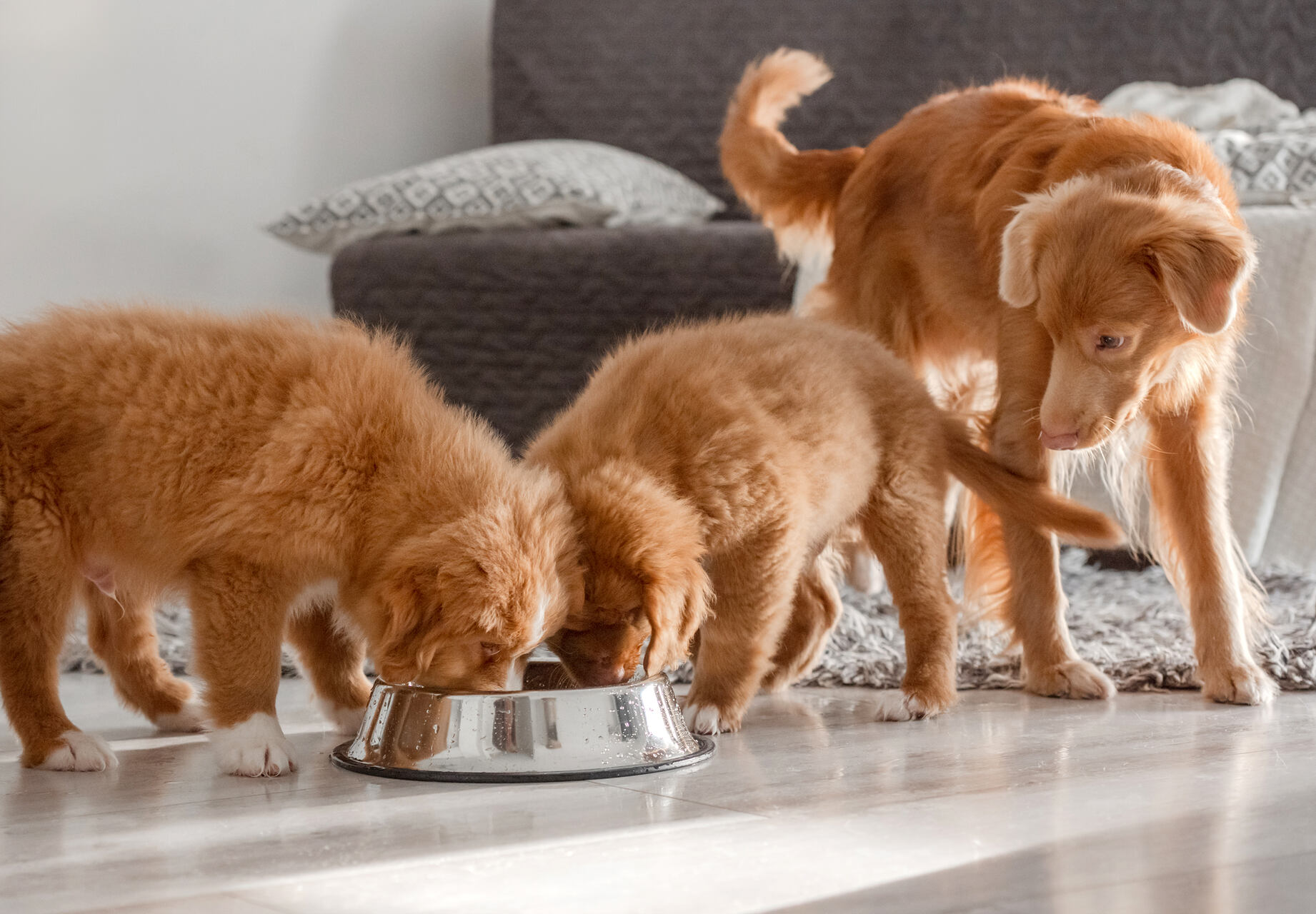
How you can help your dog be less protective over “their” things
- Drop a treat on the floor when you approach your dog, while they’re eating or playing with a specific toy that they’re protective around. This will help them learn to associate your presence with the treat. Meaning, you’re not a threat.
- Ensure everyone interacting with your dog respects their boundaries during mealtimes and not to withhold any of their favorite toys or items.
- Train your dog to learn commands like “Drop it,” – so you don’t need to wrestle out an item from their mouth. (Which will only worsen their resource guarding or make them think it’s a fun game!)
- Swap out a “favorite” item with some treats if you need to clear it away. Distracting your dog by taking them to another room can help.
- If all these steps don’t help, get in touch with your vet or a professional dog behavior specialist.
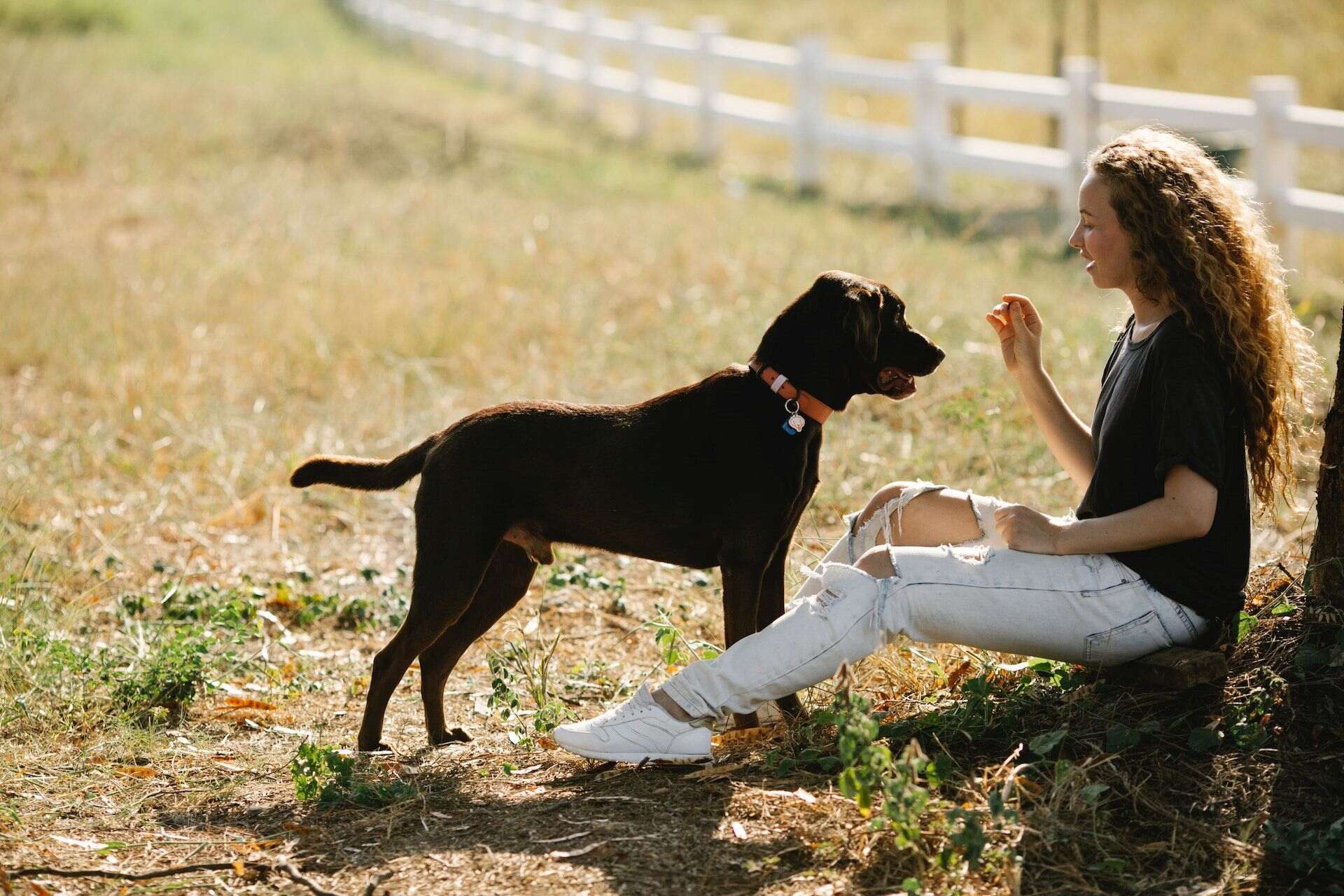
Most importantly…
- Watch out for any weird hiding behaviors, which might signal fear, stress, or anxiety – especially if your buddy tends to hoard their favorite items in specific spots.
Both the indoors and outdoors include a whole bunch of “hoarding” spots for your buddy – which can lead to some dangerous situations if they’re outdoors, unsupervised. Even more so if they’re:
- Squeezing themselves into narrow, hard-to-escape spaces indoors
- Making a mess of your backyard digging holes all over
- Venturing further outdoors to find those perfect hiding or hoarding spots
⚠️ All of which open up the risk of your dog getting stuck, trapped, injured, stolen, or lost – especially when you aren’t around to supervise.

💡So imagine the relief and peace of mind from knowing you could track down your dog – with just a glance at your phone?
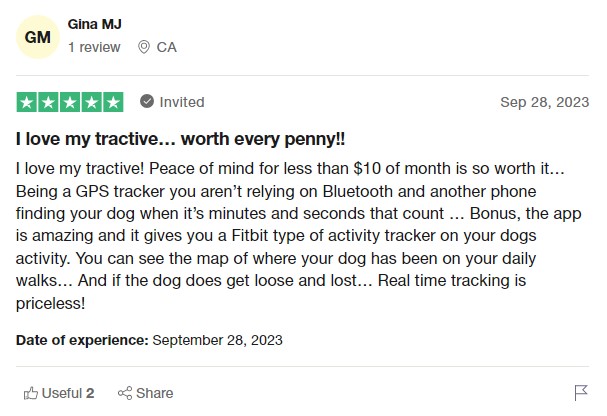
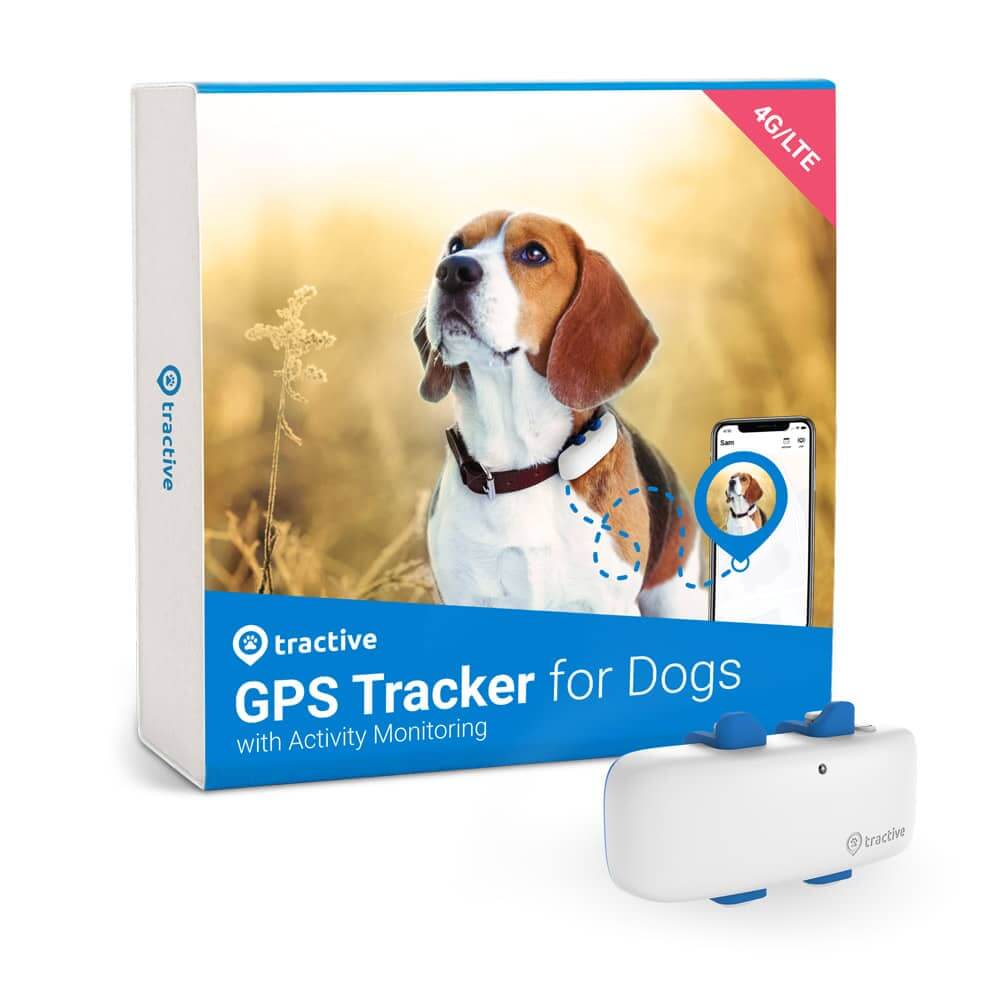
Always know where your dog is
Follow every step in real-time with unlimited range. Get alerts if they wander too far. Keep them happy & healthy with Wellness Monitoring. And let others – like walkers or sitters – keep an eye on your dog too.
Got a couple of dogs at home and worried they’ll end up fighting over toys or food? Here’s a short, sweet video on how to help them get along:
And if you’ve liked this post, share it with a friend or a loved one – and let’s help build a safer, kinder world for our furry friends together.


